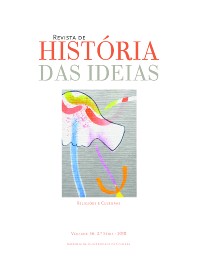Please use this identifier to cite or link to this item:
https://hdl.handle.net/10316.2/93050| DC Field | Value | Language |
|---|---|---|
| dc.contributor.author | Marujo, António | - |
| dc.date.accessioned | 2018-05-14T14:54:48Z | |
| dc.date.accessioned | 2020-10-01T08:40:52Z | - |
| dc.date.available | 2018-05-14T14:54:48Z | |
| dc.date.available | 2020-10-01T08:40:52Z | - |
| dc.date.issued | 2018 | - |
| dc.identifier.issn | 0870-0958 | - |
| dc.identifier.issn | 2183-8925 (PDF) | - |
| dc.identifier.uri | https://hdl.handle.net/10316.2/43829 | - |
| dc.description.abstract | Mais de cinco milhões de pessoas por ano, em Fátima, fazem do santuário um dos mais concorridos do mundo. Há 100 anos, três crianças contaram que viram a mãe de Jesus. Pode isto ser verdade? Será Fátima uma mentira? Ou é uma construção? O artigo procura analisar alguns dos elementos que fizeram do fenómeno o que ele é: a linguagem religiosa da época, marcada por medos e rituais; a oposição da imprensa republicana, que seria a maior divulgadora inicial do fenómeno; a linguagem anticomunista, num contexto de violentas perseguições aos cristãos; os anseios de paz, presentes desde o início e que atravessaram o século, até à Guerra Colonial; e o discurso dos papas que, em visita ao santuário, destacaram ideias diferentes das que estavam presentes no discurso fundador – culminando no Papa Francisco que, em 2017, criticou mesmo a ideia da «santinha» a quem se pedem favores a baixo preço. | por |
| dc.description.abstract | More than five million people a year in Fatima make the sanctuary one of the busiest in the world. One hundred years ago, three children reported that they saw Jesus’ mother. Can this be true? Is Fatima a lie? Or is it a construction? The article tries to analyze some of the elements that made the phenomenon what it is: the religious language of the time, marked by fears and rituals; the opposition of the republican press, that would be the biggest initial promoter of the phenomenon; the anti-communist language, in a context of violent persecution of Christians; the anxieties of peace, present from the beginning and that crossed the century, until the Colonial War; and the speech of the Popes who, on their visit to the sanctuary, emphasized ideas different from those present in the founding discourse – culminating in Pope Francisco who in 2017 criticized even the idea of the «santinha» to whom favors are solicited at low prices. | eng |
| dc.language.iso | por | - |
| dc.publisher | Imprensa da Universidade de Coimbra | - |
| dc.rights | open access | - |
| dc.subject | Fátima | eng |
| dc.subject | Pope(s) | eng |
| dc.subject | Holy Mary | eng |
| dc.subject | Catholic Church | eng |
| dc.subject | Politics | eng |
| dc.subject | Fátima | por |
| dc.subject | Papa(s) | por |
| dc.subject | Nossa Senhora | por |
| dc.subject | Igreja Católica | por |
| dc.subject | Política | por |
| dc.title | A construção de Fátima | por |
| dc.title.alternative | The construction of Fátima | por |
| dc.type | article | - |
| uc.publication.collection | Revista de História das Ideias vol. 36, 2ª Série | - |
| uc.publication.firstPage | 195 | - |
| uc.publication.lastPage | 219 | - |
| uc.publication.location | Coimbra | - |
| uc.publication.journalTitle | Revista de História das Ideias | - |
| uc.publication.volume | 36 | por |
| dc.identifier.doi | 10.14195/2183-8925_36_9 | - |
| uc.publication.orderno | 10 | - |
| uc.publication.area | Artes e Humanidades | - |
| uc.publication.manifest | https://dl.uc.pt/json/iiif/10316.2/93050/252273/manifest?manifest=/json/iiif/10316.2/93050/252273/manifest | - |
| uc.publication.thumbnail | https://dl.uc.pt/retrieve/11952287 | - |
| item.grantfulltext | open | - |
| item.fulltext | With Fulltext | - |
| Appears in Collections: | Revista de História das Ideias | |
Files in This Item:
| File | Description | Size | Format | |
|---|---|---|---|---|
| a_construcao_de_fatima.pdf | 808.01 kB | Adobe PDF |  |
Items in DSpace are protected by copyright, with all rights reserved, unless otherwise indicated.
